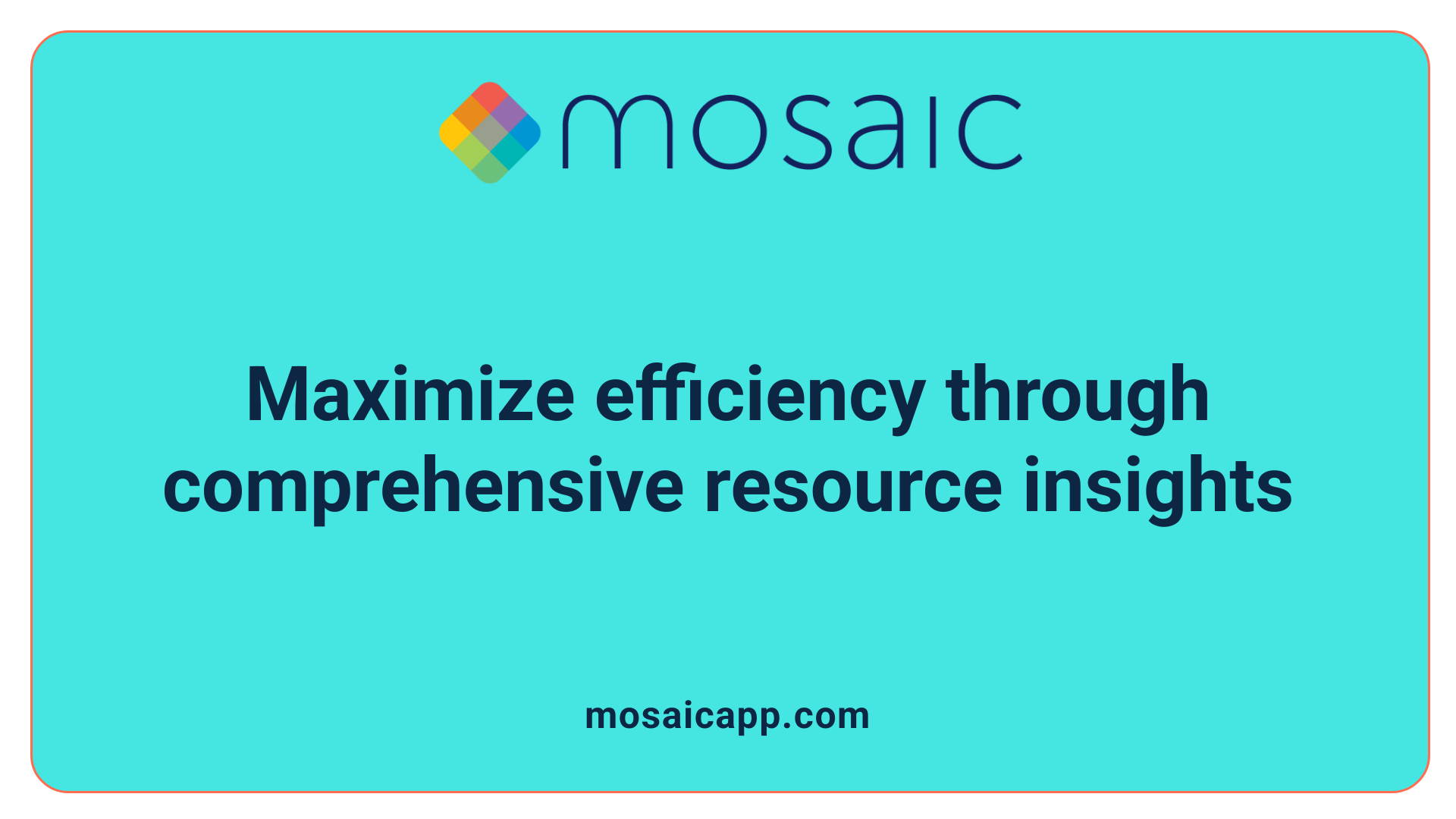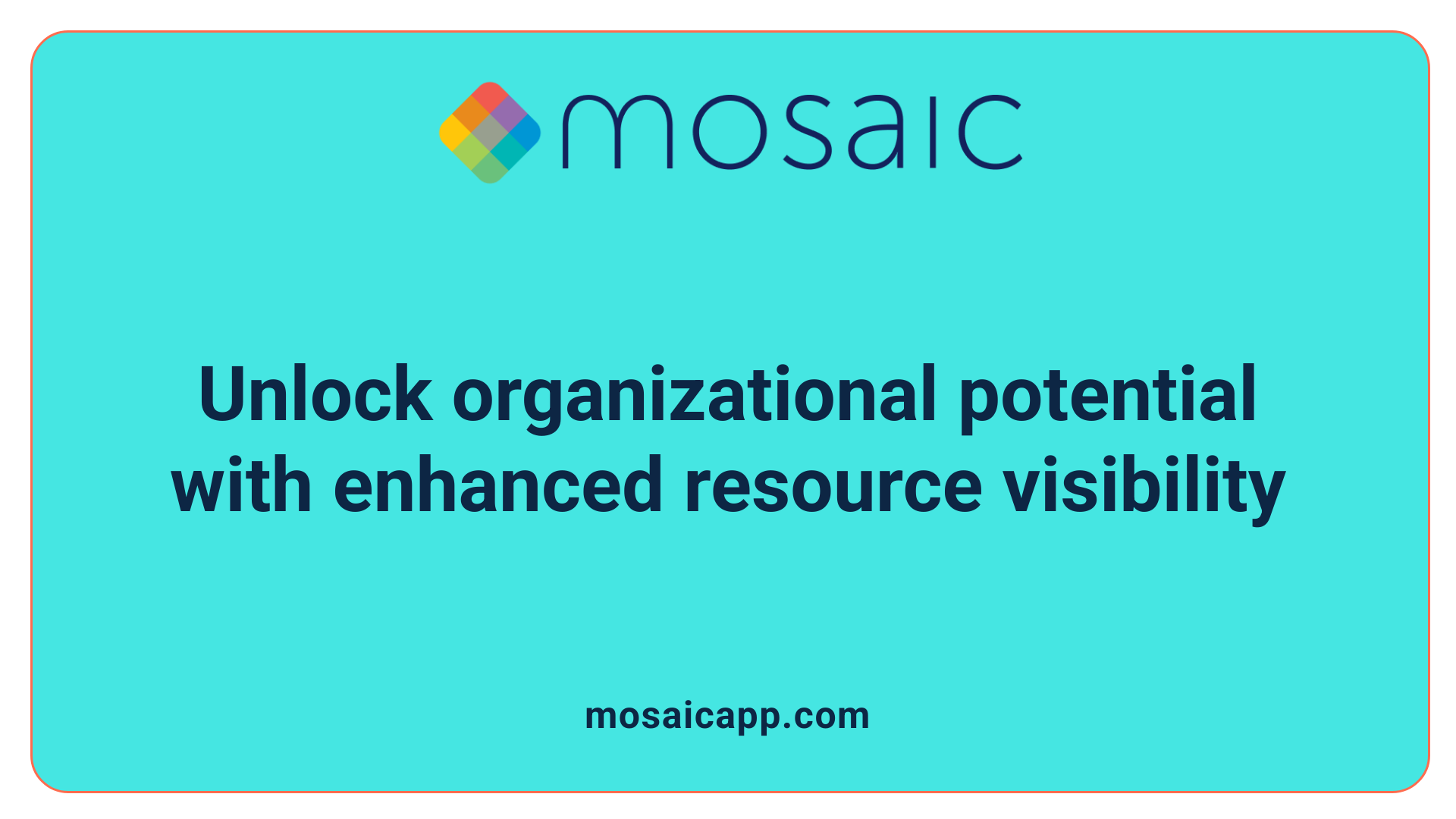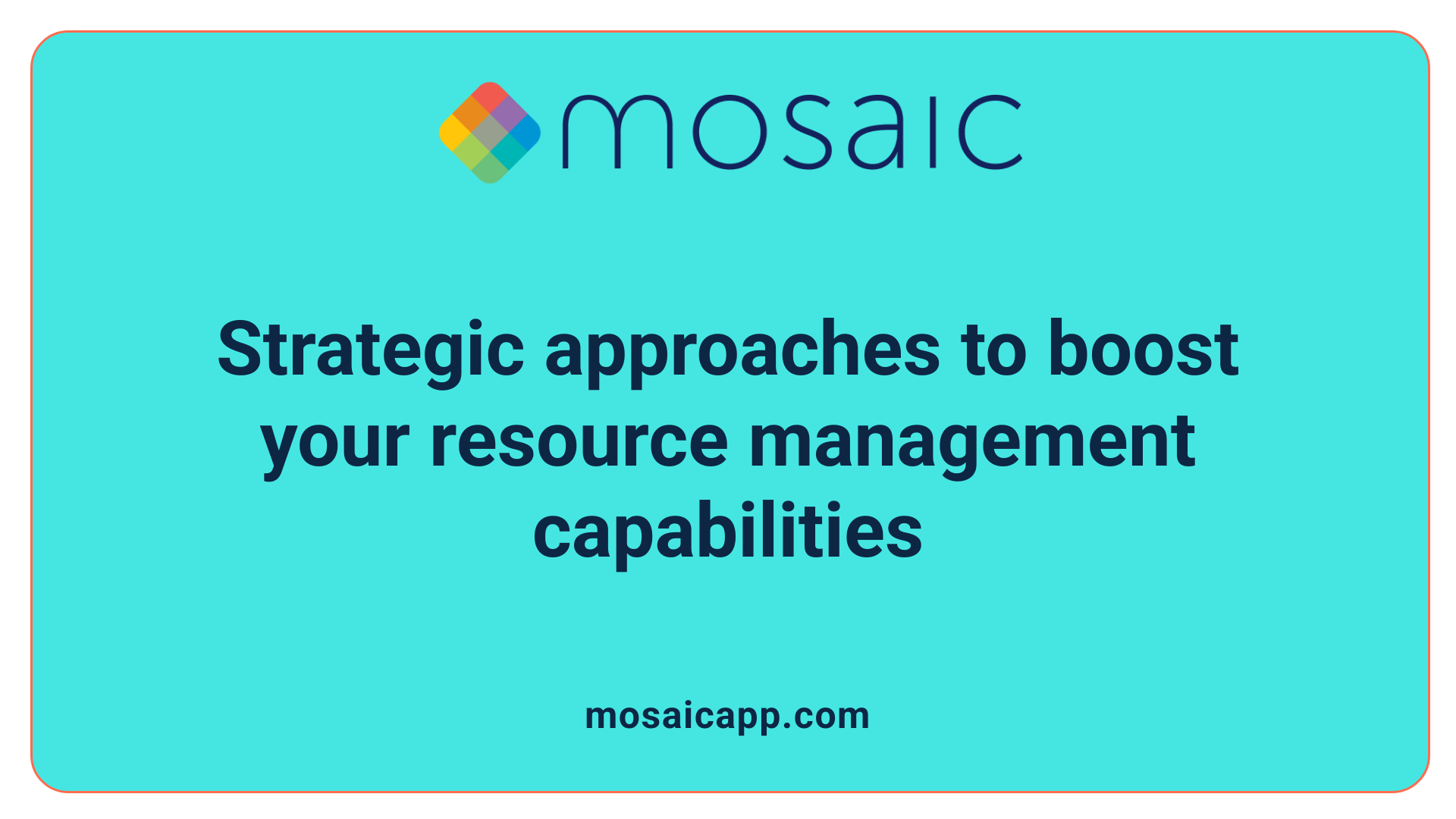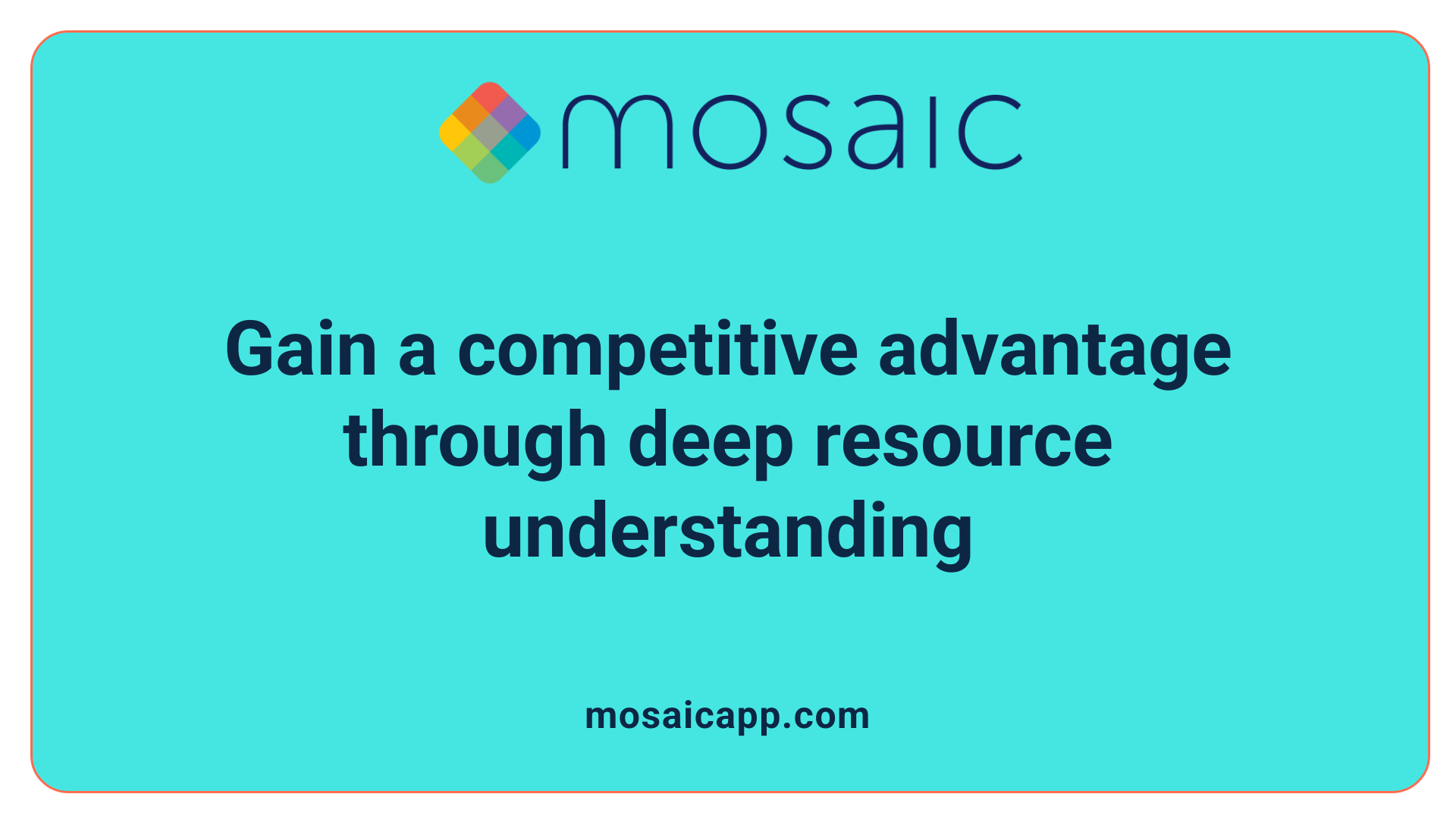Understanding the Critical Role of Resource Visibility in Modern Business
In today’s complex and fast-changing business environment, resource visibility has emerged as a cornerstone for effective decision-making and organizational resilience. By gaining a comprehensive, real-time understanding of resources, organizations can optimize operations, mitigate risks, and maintain a competitive edge. This article explores why resource visibility is fundamental to better business decisions and how organizations can harness its power to achieve superior outcomes.
The Significance of Resource Visibility in Business Management

What is the significance of resource visibility in business management?
Resource visibility is a critical aspect of effective business management. It offers a comprehensive view of resource availability, workload, and capacity across projects and operational areas. This clear insight allows organizations to make smarter decisions about how they allocate and utilize their resources.
By understanding exactly what resources are available and how they are being used, companies can prevent overallocation and avoid wasting valuable assets. This not only improves operational efficiency but also helps control costs by reducing unnecessary expenditures.
Having high visibility into resources enhances scheduling, prioritization, and teamwork. Teams can coordinate better, ensuring that projects are completed on time and within budget. It also allows managers to spot potential issues early, such as conflicts or bottlenecks, which can cause delays or lead to employee burnout.
In addition, resource transparency supports strategic planning and accountability. Organizations can forecast future needs more accurately and adapt swiftly to changing demands. Overall, resource visibility equips companies with the agility and insight needed to stay competitive in dynamic markets.
Driving Organizational Success through Enhanced Visibility

How does resource visibility contribute to better organizational outcomes?
Resource visibility, which includes both operational and IT dimensions, is fundamental for fostering organizational success. When organizations have a clear view of their spending, workflows, and system performance, they can make smarter decisions quickly.
Having access to real-time data and detailed dashboards helps leaders spot inefficiencies, track progress, and adjust strategies as needed. This transparent view supports operational excellence by ensuring that resource allocation aligns with organizational goals and market demands.
Furthermore, centralized platforms help unify data from disparate systems, reducing silos that can cause delays and errors. This consolidation improves data accuracy and availability, enabling more accurate analysis and forecasting.
Automation tools, such as spend analytics and spend management software, streamline data collection and offer instant insights. These advancements improve productivity by reducing manual effort and allowing teams to focus on strategic initiatives.
Overall, resource visibility enhances agility, boosts customer satisfaction, and preserves resilience during changing market conditions. It encourages continuous improvement by providing the necessary insights to optimize processes and resources consistently.
Implementing Strategies to Enhance Resource Visibility

What strategies can organizations implement to improve resource visibility?
Organizations aiming to enhance resource visibility can adopt several effective strategies. First, implementing centralized, integrated resource management systems is crucial. These systems provide real-time data and updates on resource allocation, availability, and utilization, enabling managers to make timely and informed decisions.
Second, leveraging visualization tools such as dashboards, heatmaps, and comprehensive reports helps stakeholders gain a quick understanding of resource deployment across projects and departments. These visual aids highlight bottlenecks, idle resources, and areas needing attention, improving overall oversight.
Additionally, establishing clear and standardized processes for skill mapping, forecasting, and precise timekeeping enhances planning accuracy. This ensures that the right skills are matched with project needs, and future demands are anticipated effectively.
Communication also plays a vital role. Regular updates via status reports, collaborative tools, and scheduled meetings help maintain transparency. Consistent communication fosters teamwork, aligns expectations, and quickly addresses emerging issues.
Combining these strategies creates a cohesive approach that boosts operational efficiency. It allows organizations to identify resource gaps early, optimize workloads, and make strategic decisions about staffing and project management. Ultimately, these efforts lead to better utilization of resources and stronger organizational performance.
The Impact of Demand and Spend Visibility on Decision-Making
How does demand and spend visibility influence decision-making?
Demand and spend visibility play a crucial role in shaping smarter, more strategic decisions within an organization. By providing real-time insights into procurement activities and expenses, organizations gain a clearer and more comprehensive understanding of where and how their funds are being utilized.
This level of visibility allows businesses to allocate resources more accurately, ensuring that budgets are aligned with actual needs and priorities. It also makes it easier to spot wasteful or maverick spending, which can then be addressed promptly. As a result, companies can reduce costs and improve overall financial control.
Furthermore, detailed data on procurement helps organizations analyze spending patterns over time. This insight supports strategic planning, such as negotiating better terms with suppliers or identifying more cost-effective sourcing options. It also helps benchmark supplier performance, enabling more informed negotiations.
Enhanced visibility into procurement processes and supplier relationships aids in risk mitigation by highlighting potential vulnerabilities, ensuring compliance, and fostering stronger partnerships. It can even reveal opportunities to streamline workflows and eliminate inefficiencies.
In conclusion, demand and spend visibility empower organizations to make data-driven decisions aligned with their operational and strategic aims. They foster a proactive approach, allowing companies to respond swiftly to market changes, optimize their resource deployment, and ultimately achieve better financial performance.
Resource Visibility as a Catalyst for Organizational Efficiency and Competitive Edge

What is the impact of resource visibility on organizational efficiency and competitive advantage?
Resource visibility is a fundamental element that significantly boosts organizational efficiency. When companies have a clear view of their key resources—whether tangible assets like equipment and infrastructure or intangible ones such as intellectual property, skills, and brand reputation—they can better coordinate and utilize these assets effectively.
This clarity allows organizations to identify which resources are most valuable, rare, difficult to imitate, and non-substitutable—criteria outlined in the resource-based view (RBV). Resources meeting these VRIN standards can provide a sustained competitive advantage, giving companies an edge in the marketplace.
For example, understanding the strengths of proprietary technology or strategic relationships helps firms leverage these assets for innovation and growth. Conversely, lack of visibility can lead to redundancy, underutilization, or missed opportunities, ultimately hampering operational efficiency.
Resource visibility also underpins strategic decision-making. By having transparent data on resource capabilities and constraints, managers can make informed choices about where to invest, how to allocate funds, and which projects to prioritize. This proactive approach supports ongoing innovation, enabling businesses to adapt quickly to changing market conditions.
Furthermore, maintaining high levels of resource visibility promotes long-term sustainability. It ensures that resources are not only used efficiently in the short term but also nurtured and protected for future strategic initiatives. In a fiercely competitive environment, this comprehensive awareness helps organizations sustain their market position and continuously develop unique advantages.
In summary, improved resource visibility leads to operational excellence, fosters innovation, and helps organizations build a durable and distinctive competitive stance. Companies that prioritize understanding their assets in depth are better positioned to execute strategic initiatives, respond to challenges swiftly, and translate resource insights into long-term success.
Resource Visibility and Risk Management: A Critical Connection

How does resource visibility relate to risk management within an organization?
Resource visibility plays a vital role in effective risk management by providing a clear and real-time picture of an organization’s available resources, their utilization, and dependencies. When resources such as personnel, equipment, or time are transparently tracked, organizations can swiftly spot potential issues like shortages, over-allocation, or skills becoming obsolete.
Having access to accurate resource data allows managers to identify risks early—before they escalate into project delays or unexpected costs. For example, if a project is over-reliant on a critical team member who is nearing capacity, organizations can reassign tasks or source additional talent proactively.
Advanced tools like resource management platforms and dependency maps automate the collection of this data, giving organizations the means to assess risk levels continuously. This ongoing visibility supports proactive planning, such as workload balancing and contingency arrangement development, mitigating the impact of unforeseen disruptions.
Furthermore, transparency into resource status enhances decision-making, letting leaders allocate resources efficiently and respond swiftly to variances from planned timelines or budgets. Such proactive management reduces project risks, Streamlines operations, and strengthens the organization’s ability to adapt to volatile market conditions.
Ultimately, comprehensive resource visibility ensures that organizations can preemptively address risks, optimize resource use, and maintain project and strategic alignment, fostering resilience and operational excellence.
The Strategic Value of Schedule Visibility in Business Operations
What is schedule visibility and how does it influence decision-making?
Schedule visibility refers to the amount of information managers can access when planning resources and overseeing projects. It encompasses detailed data such as team capacity, availability, current assignments, project timelines, and even time zones. Having a clear view of these elements allows for better-informed decisions about resource allocation and project scheduling.
High levels of schedule visibility enable managers to optimize staff utilization, avoid overloading or underusing team members, and keep workloads balanced. This transparency helps identify potential conflicts, resource shortages, or skill gaps early on, paving the way for proactive adjustments.
When project progress and resource deployments are visible and transparent, course corrections can be swiftly implemented to ensure projects stay on track and within budget. Enhancing schedule visibility not only streamlines coordination but also reduces delays and fosters stakeholder confidence.
Moreover, accurate schedule insights align sales and delivery teams, ensuring commitments are based on actual capacity. Ultimately, robust schedule visibility promotes trust, improves operational efficiency, and supports strategic resource management.
Harnessing Visibility for Sustainable Business Growth
In conclusion, resource visibility is not merely a management tool but a strategic imperative that underpins effective decision-making, operational excellence, and competitive resilience. By leveraging advanced technologies and integrated systems, organizations can achieve comprehensive, real-time insights into their resources, risks, and demands. This transparency enhances agility, optimizes resource deployment, and fosters a proactive approach to challenges and opportunities. As businesses navigate an increasingly volatile landscape, the ability to see clearly into all aspects of resource management will determine their capacity to innovate, adapt, and sustain long-term growth. Embracing resource visibility is, therefore, essential for organizations aiming to secure a robust and dynamic future.
References
- Putting a Spotlight on Your Spending: Why Visibility Matters
- 4 Reasons Why Every Business Needs Data Visibility
- Understanding Spend Visibility And Why It Matters
- Visibility: Definition, importance, and business applications
- Visibility: An Invaluable Resource
- Enterprise Risk Visibility Empowers Better Decision-Making
- Why Schedule Visibility is the Secret to Staffing Success


